switzerland

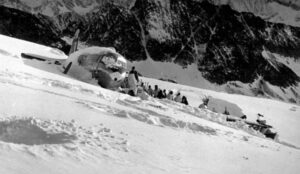 When Switzerland found itself in the middle of an unusual heatwave, the Gauli Glacier melted enough to uncover the wreckage debris of an American World War II plane that crash-landed in the Bernese Alps 72 years ago. Now, when you hear about the crash of a plane, especially into a mountain or in this case, a glacier, you expect to find fatalities. Of course, this plane crashed a long time ago, and the authorities already knew the outcome of that crash. The people who found the plane in the ice, however, might not have. This plane, a C-53 Skytrooper Dakota had been traveling from Austria to Italy when it collided with the Gauli Glacier at an altitude of 10,990 feet on that fateful day.
When Switzerland found itself in the middle of an unusual heatwave, the Gauli Glacier melted enough to uncover the wreckage debris of an American World War II plane that crash-landed in the Bernese Alps 72 years ago. Now, when you hear about the crash of a plane, especially into a mountain or in this case, a glacier, you expect to find fatalities. Of course, this plane crashed a long time ago, and the authorities already knew the outcome of that crash. The people who found the plane in the ice, however, might not have. This plane, a C-53 Skytrooper Dakota had been traveling from Austria to Italy when it collided with the Gauli Glacier at an altitude of 10,990 feet on that fateful day.
It was November 19, 1946, and the plane carrying four crew members and eight passengers were enjoying their trip, when something went terribly wrong. When they hit the glacier, several people were injured, amazingly, there were no fatalities. Among the passengers were high-ranking United States service members traveling with relatives…four women and one 11-year-old girl. Now, they found themselves high up on a glacier, and it was likely very cold. They were stuck at the crash site for six days before rescuers found them and could 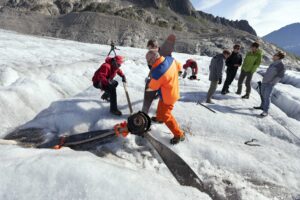
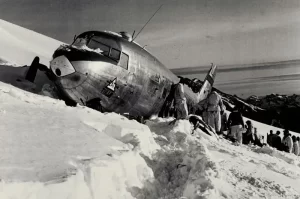 get to them. They were forced to drink snow water and ration chocolate bars to survive, but survive they did. Many times, survival at a crash site, if you survived the initial crash, is all about using common sense and keeping your wits about you. You have to take stock of your supplies and be willing to ration what you have. You can’t let anyone get out of control, because a panic could waste vital supplies. Water is the most vital of the supplies, because while the human body can go weeks without food, it can only live a few days without water. While it would seem that water on a glacier would be plentiful, it may not be so. You would have to chip away at the ice, and then melt it to drink. In addition, you have to get it warm, or you will risk the water causing Hypothermia. This particular group managed to do things right, or at least enough right to survive the six days while they waited for rescue. Once rescued, they went on with their lives feeling very blessed to be alive.
get to them. They were forced to drink snow water and ration chocolate bars to survive, but survive they did. Many times, survival at a crash site, if you survived the initial crash, is all about using common sense and keeping your wits about you. You have to take stock of your supplies and be willing to ration what you have. You can’t let anyone get out of control, because a panic could waste vital supplies. Water is the most vital of the supplies, because while the human body can go weeks without food, it can only live a few days without water. While it would seem that water on a glacier would be plentiful, it may not be so. You would have to chip away at the ice, and then melt it to drink. In addition, you have to get it warm, or you will risk the water causing Hypothermia. This particular group managed to do things right, or at least enough right to survive the six days while they waited for rescue. Once rescued, they went on with their lives feeling very blessed to be alive.
The snow, and later, ice covered the plane as the years went by, and it was very likely forgotten…until 2012 anyway, when three young people discovered the plane’s propeller on the glacier. They continued to observe the emerging plane and as the glacier continued to melt, the scene unfolded. Today, it reportedly looks like a 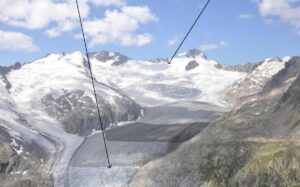
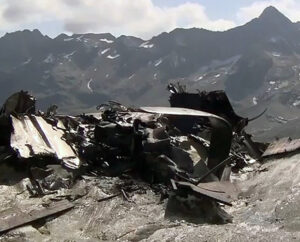 field covered in plane debris, and many people probably wonder how anyone managed to live through the initial crash…much less everyone. As the glacier melted, the plane slid down the mountainside and was expected to finally emerge at the bottom. In fact, much of the debris field might actually be caused by the melting ice.
field covered in plane debris, and many people probably wonder how anyone managed to live through the initial crash…much less everyone. As the glacier melted, the plane slid down the mountainside and was expected to finally emerge at the bottom. In fact, much of the debris field might actually be caused by the melting ice.
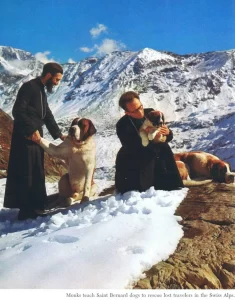 People have been fascinated with Saint Bernard dogs for years. There have been movies made about them, often portraying them as clumsy, drooling pests that “terrorize” homes by making massive messes. Saint Bernards might seem like they are big and clumsy, but for many years, they have been saving lives, and they weren’t clumsy about their work at all. In fact, they were experts at their work.
People have been fascinated with Saint Bernard dogs for years. There have been movies made about them, often portraying them as clumsy, drooling pests that “terrorize” homes by making massive messes. Saint Bernards might seem like they are big and clumsy, but for many years, they have been saving lives, and they weren’t clumsy about their work at all. In fact, they were experts at their work.
In the early 18th century some monks, who were living in the snowy and dangerous Saint Bernard Pass, which is a route through the Alps between Italy and Switzerland, kept these dogs to help them on their rescue missions after bad snowstorms. In fact, the Saint Bernard dogs got their name from the pass where the monks were located. Over a span of nearly 200 years, about 2,000 people, from lost children to Napoleon’s soldiers, were rescued because of the heroic dogs’ uncanny sense of direction and resistance to cold. Of course, there were changes in the dogs through crossbreeding, and finally the dogs became the amazing new breed they are today. While the dogs are amazing as rescue dogs, Saint Bernard dogs are also commonly seen in households today.
The dogs were trained to hunt for people who were lost, and when they found them, the dogs allegedly carried a small cask of liquor around their neck…although, this has not been documented for sure. Then, the dog would lay on top of the victim to keep them warm. Being lost in a snowstorm, often called “white death” could become a death sentence, because hypothermia would soon set in, and the victim would be lost. At a little more than 8,000 feet above sea level, the Great Saint Bernard Pass is a 49-mile route in the Western Alps. The pass is covered with snow for most of the year, and in fact, it is only snow free for a couple of months during the 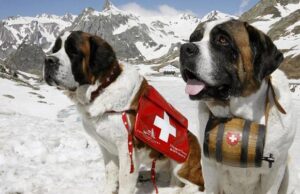 summer. Throughout history, the route has been a treacherous one for many travelers. Of course, that didn’t stop people from trying to make the trek. An Augustine monk named Saint Bernard de Menthon founded a hospice and monastery around the year 1050, which is how Saint Bernard Pass came into being. Sometime between 1660 and 1670, the monks at Great Saint Bernard Hospice acquired their first Saint Bernards. These dogs were descendants of the mastiff style Asiatic dogs brought over by the Romans. The dogs were to be used as watchdogs and companions. The original Saint Bernards were quite a bit smaller in size, had shorter reddish brown and white fur, and a longer tail.
summer. Throughout history, the route has been a treacherous one for many travelers. Of course, that didn’t stop people from trying to make the trek. An Augustine monk named Saint Bernard de Menthon founded a hospice and monastery around the year 1050, which is how Saint Bernard Pass came into being. Sometime between 1660 and 1670, the monks at Great Saint Bernard Hospice acquired their first Saint Bernards. These dogs were descendants of the mastiff style Asiatic dogs brought over by the Romans. The dogs were to be used as watchdogs and companions. The original Saint Bernards were quite a bit smaller in size, had shorter reddish brown and white fur, and a longer tail.
Travel on the Saint Bernard Pass route was so dangerous, and at the turn of the century, servants used as guides were assigned to accompany travelers between the hospice and Bourg-Saint-Pierre, a municipality on the Swiss side. The trek was even treacherous for them, and by 1750, the guides were routinely accompanied by the dogs, whose broad chests helped to clear paths for travelers. While working with the dogs, the guides soon discovered that the dogs had a tremendous sense of smell, as well as their ability to discover people buried deep in the snow. Soon the dogs were sent out in packs of two or three alone to seek lost or injured travelers. Once they found a lost traveler, one dog would stay with the victim, while the other or others would go back to the hospice to bring help.
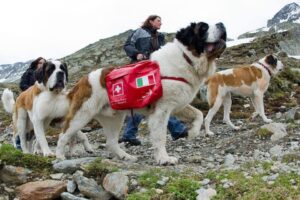 So good were these dogs at their work, that when Napoleon and his 250,000 soldiers crossed through the pass between 1790 and 1810, not one soldier lost his life. The soldiers’ chronicles tell of how many lives were saved by the dogs in what the army had named “the White Death.” So amazing were these dogs, that one, named Barry, that was particularly legendary, who lived in the monastery from 1800-1812, saved the lives of more than 40 people. In 1815, Barry’s body was put on exhibit at the Natural History Museum in Berne, Switzerland, where it remains today. Saint Bernard dogs have proven themselves to be a vital part of mountain rescue operations.
So good were these dogs at their work, that when Napoleon and his 250,000 soldiers crossed through the pass between 1790 and 1810, not one soldier lost his life. The soldiers’ chronicles tell of how many lives were saved by the dogs in what the army had named “the White Death.” So amazing were these dogs, that one, named Barry, that was particularly legendary, who lived in the monastery from 1800-1812, saved the lives of more than 40 people. In 1815, Barry’s body was put on exhibit at the Natural History Museum in Berne, Switzerland, where it remains today. Saint Bernard dogs have proven themselves to be a vital part of mountain rescue operations.
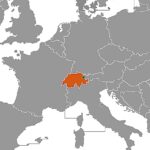 There are all kinds of records, but some are just stranger than others. Switzerland actually holds a strange record…for attacking its neighbor, Liechtenstein. This is particularly odd in that Switzerland is a neutral nation…very opposed to war!! In fact, Switzerland is the longest standing neutral nation in the world and has not taken part in a “war” since 1505. Its official stance of non-involvement had been decided during The Congress of Vienna in 1815, in which major European leaders met to discuss the nature of Europe after the defeat of Napoleon. Nevertheless, they do have an army.
There are all kinds of records, but some are just stranger than others. Switzerland actually holds a strange record…for attacking its neighbor, Liechtenstein. This is particularly odd in that Switzerland is a neutral nation…very opposed to war!! In fact, Switzerland is the longest standing neutral nation in the world and has not taken part in a “war” since 1505. Its official stance of non-involvement had been decided during The Congress of Vienna in 1815, in which major European leaders met to discuss the nature of Europe after the defeat of Napoleon. Nevertheless, they do have an army.
Diplomatic and economic relations between Switzerland and Liechtenstein have been good. In fact, you could say relations were very good, with Switzerland accepting the role of safeguarding the interests of its tiny next-door neighbor. Liechtenstein has an embassy in Bern, Switzerland, and Switzerland is accredited to Liechtenstein from its Federal Department of Foreign Affairs in Bern and maintains an honorary consulate in Vaduz, Liechtenstein. The two countries also share an open border, mostly along the Rhine, but also in the Rätikon range of the Alps, between the Fläscherberg and the Naafkopf.
With all that “good will” between the nations, you would never expect conflict, but apparently, Switzerland has 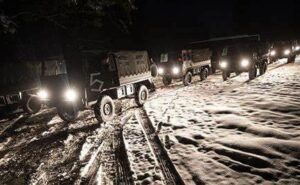 attacked Liechtenstein three times in 30 years. Of course, it was by mistake each time! How does that happen? Nevertheless, it did. The first time was probably the only “aggressive” accident of the bunch. On December 5, 1985, during an artillery exercise, the Swiss Army had launched munitions in the middle a winter storm. The wind took the munitions way off course, into the Bannwald Forest of Liechtenstein, and started a forest fire. No one was injured and the Liechtenstein government was very angry. Switzerland had to pay a heavy penalty for the environmental damage caused. The second attack took place on October 13, 1992. The Swiss Army received orders to set up an observation post in Treisenberg. They followed the orders and marched to Treisenberg. What they didn’t realize was that Treisenberg lies within the territory of Liechtenstein. They marched into Treisenberg with rifles and only later realized that they were in Liechtenstein. The last attack was on March 1, 2007. A group of Swiss Army infantry soldiers was in training when the weather took a bad turn. There was heavy rainfall, and the soldiers were not carrying any GPS or compass. Eventually, they ended up in Liechtenstein! Switzerland apologized to the Liechtenstein government for the intrusion, yet again.
attacked Liechtenstein three times in 30 years. Of course, it was by mistake each time! How does that happen? Nevertheless, it did. The first time was probably the only “aggressive” accident of the bunch. On December 5, 1985, during an artillery exercise, the Swiss Army had launched munitions in the middle a winter storm. The wind took the munitions way off course, into the Bannwald Forest of Liechtenstein, and started a forest fire. No one was injured and the Liechtenstein government was very angry. Switzerland had to pay a heavy penalty for the environmental damage caused. The second attack took place on October 13, 1992. The Swiss Army received orders to set up an observation post in Treisenberg. They followed the orders and marched to Treisenberg. What they didn’t realize was that Treisenberg lies within the territory of Liechtenstein. They marched into Treisenberg with rifles and only later realized that they were in Liechtenstein. The last attack was on March 1, 2007. A group of Swiss Army infantry soldiers was in training when the weather took a bad turn. There was heavy rainfall, and the soldiers were not carrying any GPS or compass. Eventually, they ended up in Liechtenstein! Switzerland apologized to the Liechtenstein government for the intrusion, yet again.
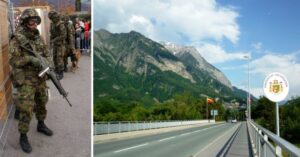
Thankfully these “accidental” attacks were not of a deadly nature. They were really more a “comedy of errors” than an attack. Thankfully, the people of Liechtenstein saw the “attacks” for what they were, and tended to care for their “intruders,” rather than fight back. Of course, that would have been difficult too, since Liechtenstein does not have an army of their own, and so depended on the “protection” of their neighbors…when they didn’t accidentally attack them.
 Switzerland has long been a neutral nation when it comes to wars other conflicts. That hasn’t always been an easy status to accomplish. According to the Hague Convention of 1907, a neutral country means that the country has declared nonparticipation during a war and cannot be counted on to help fight a belligerent country. “Non-belligerent” countries are ones that offer non-combative support in times of war. Countries interpret neutrality differently. Switzerland has what would be called armed neutrality in global affairs. Switzerland is not alone in that status, since Ireland, Austria, and Costa Rica all take similar non-interventionist stances, but Switzerland remains the oldest and most respected.
Switzerland has long been a neutral nation when it comes to wars other conflicts. That hasn’t always been an easy status to accomplish. According to the Hague Convention of 1907, a neutral country means that the country has declared nonparticipation during a war and cannot be counted on to help fight a belligerent country. “Non-belligerent” countries are ones that offer non-combative support in times of war. Countries interpret neutrality differently. Switzerland has what would be called armed neutrality in global affairs. Switzerland is not alone in that status, since Ireland, Austria, and Costa Rica all take similar non-interventionist stances, but Switzerland remains the oldest and most respected.
The desired neutrality in Switzerland started back in 1515, when the Swiss Confederacy suffered a devastating loss to the French at the Battle of Marignano. Apparently, they really lost their taste for war following the defeat, because the Confederacy completely abandoned its expansionist policies and did everything in their power to avoid any future conflict in the interest of self-preservation. No one likes a war, but I don’t think that many nations detest it so much that they would go to such extremes. While the Battle of Marignano began the desire for neutrality, it was the Napoleonic Wars, that truly sealed Switzerland’s place as a neutral nation. Switzerland was invaded by France in 1798 and later made a satellite of Napoleon Bonaparte’s empire, forcing it to compromise its neutrality. With Napoleon’s defeat at Waterloo, the major European powers decided that a neutral Switzerland might actually be a good thing. Given the volatility of the area they decided that Switzerland would serve as a valuable buffer zone between France and Austria and contribute to stability in the region. I’m not sure how they figured that, considering the fact that they would not fight. Nevertheless, during 1815’s Congress of Vienna, they signed a declaration affirming Switzerland’s “perpetual neutrality” within the international community. Switzerland had what it wanted, as did the international community.
Attaining neutrality and keeping it can be two very different things. Nevertheless, Switzerland maintained its impartial stance through World War I, when it mobilized its army and accepted refugees, also still refusing to take sides militarily. The newly formed League of Nations officially recognized Swiss neutrality and established its headquarters in Geneva in 1920. World War II presented a more significant challenge to Swiss neutrality, when the country found itself encircled by the Axis powers. For a country that no longer had a desire to fight, this was a big problem. Switzerland was able, with threats of retaliation, to maintain its independence. Switzerland also continued to trade with Nazi Germany, a decision that later proved controversial after the war ended, and one they most likely regretted.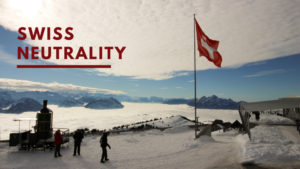
Switzerland has taken a more active role in international affairs by aiding with humanitarian initiatives since World War II, but it fiercely maintains its neutral status with regard to military affairs. Switzerland has never joined the North Atlantic Treaty Organization (NATO) or the European Union, and only joined the United Nations in 2002. Despite its longstanding neutrality, the country still maintains an army for defense purposes and requires part-time military service from all males between the ages of 18 and 34. It always best to be prepared…just in case.

 My grandson, Caalab Royce; his dad, Travis; as well as my Dad, Allen Spencer and Uncle Bill Spencer; brother-in-law, Chris Hadlock; and nephew, Ryan Hadlock all play the guitar. There may be others in the family too, but they haven’t made it public knowledge. Any time I come across a some information, on guitars or their makers, I am interested, because of these people.
My grandson, Caalab Royce; his dad, Travis; as well as my Dad, Allen Spencer and Uncle Bill Spencer; brother-in-law, Chris Hadlock; and nephew, Ryan Hadlock all play the guitar. There may be others in the family too, but they haven’t made it public knowledge. Any time I come across a some information, on guitars or their makers, I am interested, because of these people.
Adolph Rickenbacker was born on April 1, 1886 in Basel, Switzerland as Adolph Rickenbacher. Following the death of his parents, he immigrated to the United States in 1891 with relatives. He settled in Columbus Ohio and later moved to southern California. Rickenbacher was a distant cousin to America’s top Flying Ace Eddie Rickenbacker. Rickenbacher decided that the name association would be helpful to him in his chosen career, so he Anglicized both his own name and that of his company, to Rickenbacker Manufacturing Company. His company made metal bodies for the National String Instrument Corporation. These metal bodies were used to make electric guitars. Through this connection, he met George Beauchamp and Paul Barth, and in 1931 they founded the Ro-Pat-In Company.
The three men produced the first cast aluminum versions of the lap steel guitar in 1932. In 1934, they renamed their company to the Electro String Instrument Corporation. Still, this was not to be a long term business. Music instruments tend to evolve and the resulting instrument looks little like the original. Production 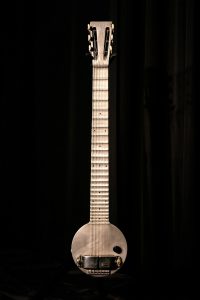
 ceased in 1939, after approximately 2,700 Frying Pan guitars had been produced. Rickenbacker, who was not convinced of the guitar business’s potential, continued manufacturing until 1953. Then he sold his company to Francis Cary Hall, a forerunner of the Southern California electric guitar boom. I wonder what might have been if the Electro String Instrument Corporation had continued on. While the signature “Frying Pan Guitar” might not have held it’s popularity, many other looks have followed.
ceased in 1939, after approximately 2,700 Frying Pan guitars had been produced. Rickenbacker, who was not convinced of the guitar business’s potential, continued manufacturing until 1953. Then he sold his company to Francis Cary Hall, a forerunner of the Southern California electric guitar boom. I wonder what might have been if the Electro String Instrument Corporation had continued on. While the signature “Frying Pan Guitar” might not have held it’s popularity, many other looks have followed.
Nevertheless, the “Frying Pan Guitar” had been a wonderful career for Rickenbacker. When he finally sold the business, Adolph Rickenbacker was 67 years old. He went on to live a over 20 more years before he died from cancer in Orange County, California on March 21, 1976 at the age of 89.
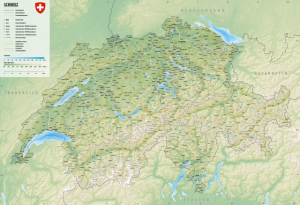 I think most of us know that a conscientious objector is a person who feels strongly about not killing…even in a war. However, there are actually entire countries who believe that way…or almost. The most well known country to claim neutrality is Switzerland. Other countries to claim non-interventionist stances include Ireland, Austria, and Costa Rica, but Switzerland is remains the oldest and most respected of them all. In fact, Switzerland has been in a state of perpetual neutrality for centuries. This state of neutrality does not mean they do not have an army, because they do. The country maintains an army for defense purposes and requires part-time military service from all males between the ages of 18 and 34. So how did this state of perpetual neutrality come about, and what does it mean exactly?
I think most of us know that a conscientious objector is a person who feels strongly about not killing…even in a war. However, there are actually entire countries who believe that way…or almost. The most well known country to claim neutrality is Switzerland. Other countries to claim non-interventionist stances include Ireland, Austria, and Costa Rica, but Switzerland is remains the oldest and most respected of them all. In fact, Switzerland has been in a state of perpetual neutrality for centuries. This state of neutrality does not mean they do not have an army, because they do. The country maintains an army for defense purposes and requires part-time military service from all males between the ages of 18 and 34. So how did this state of perpetual neutrality come about, and what does it mean exactly?
The earliest attempt by Switzerland, at neutrality came in 1515 when the Swiss Confederacy suffered a devastating loss to the French at the Battle of Marignano. After that, the country abandoned any thought of expanding it’s borders in an attempt to avoid future conflict. All this was done in the interest of self-preservation. The Napoleonic Wars, however, truly sealed Switzerland’s place as a neutral nation. Switzerland was invaded by France in 1798 and was later made a satellite of Napoleon Bonaparte’s empire, forcing it to compromise its neutrality. Napoleon was defeated, and the major European powers decided that a neutral Switzerland would provide a much needed buffer zone between France and Austria. It was assumed that their neutrality would bring stability to the region. Then during the 1815 Congress of Vienna, a declaration was signed affirming Switzerland’s state of “perpetual neutrality” within the international community. In 1920, the newly formed League of Nations officially recognized Swiss neutrality and established its headquarters in Geneva.
Switzerland’s state of perpetual neutrality has not been without it’s challenges. In World War I, it mobilized its army and accepted refugees but also refused to take sides militarily. An even bigger challenge to Switzerland’s neutrality came in World War II, when the country was surrounded by Axis powers. Switzerland continued in its neutral stance, saying that they would retaliate in the event of an invasion, but would not enter the war. Nevertheless, they continued to trade with Nazi Germany, a decision that caused controversy after the war ended.
After World War II, Switzerland has been active in international affairs by siding with humanitarian initiatives, while maintaining its neutrality when it came to military issues. 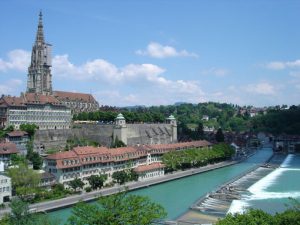 Switzerland refuses to join NATO or the European Union, and only joined the United Nations in 2002. In my opinion it might as well have stayed out of the United Nations entirely. I understand the desire to stay neutral and out of wars, but to me it seems a little bit like walking the fence. They want the good that’s offered without having to hold the evil nations accountable for their actions. I realize the Switzerland has done things for the rest of the world, but it still seems like a bit of a cop out when their trade is not affected because they refuse to argue the evil that some nations do.
Switzerland refuses to join NATO or the European Union, and only joined the United Nations in 2002. In my opinion it might as well have stayed out of the United Nations entirely. I understand the desire to stay neutral and out of wars, but to me it seems a little bit like walking the fence. They want the good that’s offered without having to hold the evil nations accountable for their actions. I realize the Switzerland has done things for the rest of the world, but it still seems like a bit of a cop out when their trade is not affected because they refuse to argue the evil that some nations do.

 When we think of a series of disasters, it is usually tornadoes, earthquakes, or floods that come to mind. On February 11, 1952, none of the usual suspects were at fault in the series of disasters that began across central Europe. Snow storms don’t normally fall into the category of a series of disasters, but when a storm stalled over middle Europe during the first week of February of 1952, it dumped two feet of snow in parts of France, Austria, Switzerland, and Germany. In the vast area of middle Europe, life quickly ground to a standstill. Everything was closed, and travel was impossible. Germany recruited thousands of people and their shovels in an attempt to make the streets passable. In France several people died when their roofs collapsed under the weight of the heavy snow accumulation.
When we think of a series of disasters, it is usually tornadoes, earthquakes, or floods that come to mind. On February 11, 1952, none of the usual suspects were at fault in the series of disasters that began across central Europe. Snow storms don’t normally fall into the category of a series of disasters, but when a storm stalled over middle Europe during the first week of February of 1952, it dumped two feet of snow in parts of France, Austria, Switzerland, and Germany. In the vast area of middle Europe, life quickly ground to a standstill. Everything was closed, and travel was impossible. Germany recruited thousands of people and their shovels in an attempt to make the streets passable. In France several people died when their roofs collapsed under the weight of the heavy snow accumulation.
The worst of the storm, however, was felt in Austria, when a series od deadly avalanches took a heavy death toll. It was during the early hours of February 11, 1952, at a ski resort in Melkoede, when a huge mass of the newly fallen snow suddenly crashed down the mountain from above. There was no time to react, and no time to get away. They were trapped. Fifty people were sleeping at the resort. Twenty of them, mostly German tourists were killed, and another ten were seriously injured. In Switzerland and Austria, authorities issued urgent warnings about potential avalanches and some villages were actually evacuated. Nevertheless, all that was not enough. The next day there were more damaging avalanches. In Isenthal, Switzerland, hundreds of cattle and several barns were buried by an avalanche. In Leutasche, Austria, a twelve year old child was saved by people who risked their own lives in the face of a second avalanche that was poised to fall. Seven members of the child’s family were killed by the avalanche.
Avalanches kill more than 150 people worldwide each year. Most are snowmobilers, skiers, and snowboarders, and most deadly avalanches are triggered by the victim or someone in their party. Given that count, I suppose that the 78 people who perished in the February avalanches in middle Europe in 1952, might seem like a small number, but when you consider that these deaths occurred over a period of a few days, and the rest of the deaths by avalanches from that year were not included in that number, the death toll is staggering. This was not the worst avalanche death toll, however. That record, if it is right to call it such, goes to the Huascarán avalanche that was triggered by the 1970 Ancash earthquake in Peru. On 31 May 1970, the Ancash earthquake caused a substantial part of the north side of the mountain to collapse. The avalanche mass, an 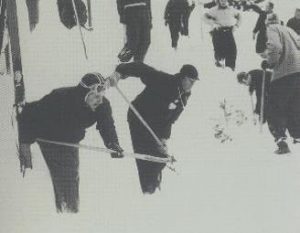
 estimated 80 million cubic feet of ice, mud and rock, was about half a mile wide and a mile long. It advanced about 11 miles at an average speed of 175 to 200 miles per hour, burying the towns of Yungay and Ranrahirca under ice and rock, killing more than 20,000 people. This avalanche, in my estimation, might have been more of a landslide than an avalanche, and so it’s very possible that all of these people would have died had there been snow or not.
estimated 80 million cubic feet of ice, mud and rock, was about half a mile wide and a mile long. It advanced about 11 miles at an average speed of 175 to 200 miles per hour, burying the towns of Yungay and Ranrahirca under ice and rock, killing more than 20,000 people. This avalanche, in my estimation, might have been more of a landslide than an avalanche, and so it’s very possible that all of these people would have died had there been snow or not.

